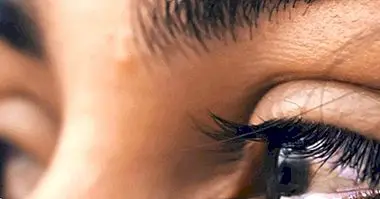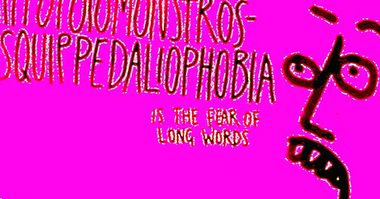Absence crisis: causes, symptoms and treatment
Epilepsy is a neurological disease characterized by the presence of seizures. The crises that are most present in our minds when we speak of epilepsy are those with violent contractions of the muscles and loss of consciousness.
But they are not the only type of crisis that someone can suffer. Absence crises, or petit mal, they are much more discreet and physically harmless, but they must also be treated .
What is a crisis of absence?
Nor are all crisis of absence equal. Due to how fleeting they are, they often do not identify themselves and the parents of the children who suffer from them take time to realize that their child suffers epilepsy.
Let's see in what ways the crisis of absence and what can be done with the people who suffer them.
symptom
Absence crises are present almost exclusively in children. They are characterized by a brief period, usually about 15 seconds, where the individual who suffers them seems completely distracted and with a lost look. As if he were absorbed in his world. The typical signs and symptoms are:
- Lips clicks
- Fast flashing
- Motor activity suddenly stops
- Chewing movements
- Small movements in both hands
These crises begin abruptly , in which the patient stops what he was doing or saying, he suffers the crisis maintaining the same position, and when the crisis is resolved he continues with the activity he was doing. There is no kind of memory of the episode, and you will often be surprised if someone else tells you that you just went blank for a few seconds.
Because children with absence crises may seem like they are simply distracted, many parents get confused and believe that the only thing that happens is that they were mentally absorbed in something. The first ones to realize this are usually the teachers, although these can also get confused and talk with the parents about how from time to time the child seems to disconnect from the class. If these phenomena occur frequently, it is likely to be a crisis of absence and not of distraction.
Not all absence crises are the same. Although most begin and end abruptly and quickly, there is an atypical form of crisis where the symptoms are identical, but they start more slowly and have a longer duration. In addition, during the crisis the person can lose muscle tone or fall, and after the crisis will feel very confused.
Causes
In most cases, absence crises are not manifestations of any underlying disease . The crises simply happen because the child is predisposed to suffer electrical alterations in the brain that cause the episodes. The electrical impulses that neurons use to communicate with each other become abnormal. In absence crises, these electrical signals from the brain are repeated in a repetitive pattern that lasts three seconds.
This predisposition to suffer a crisis of absence is probably genetic and is transmitted from generation to generation. Some children have seizures when hyperventilating while others suffer from strobe lights. The exact cause that triggers the attacks is often unknown, but that does not prevent the crises are treatable.
Treatment
Once the child passes through the neurologist, it is likely that he will confirm the diagnosis through the provocation of a crisis and its measurement through an electroencephalogram. Further, Imaging tests such as an MRI will be necessary to rule out other diagnoses that can cause similar symptoms and ensure that they are pure absence crises.
Once the diagnosis is made, children with absence crises receive pharmacological treatment. Typically antiepileptic medication is used, starting at low doses until the necessary dose is reached to prevent the onset of more seizures. Some common antiepileptics are ethosuximide, valproic acid, and lamotrigine. Any of the three active principles will be effective and safe, although the preference for one or the other will depend on the characteristics of the specific case.
There are some activities that should be avoided in people with absence crises, as they cause a temporary loss of consciousness. For example, driving a bicycle or swimming could end up in an accident or in drowning. Until the crises are under control, these children (and in some cases adults) should refrain from doing these activities. There are also bracelets that warn others to be suffering an attack, accelerating the process in case of emergency.
Forecast
The prognosis of absence crises is usually positive . Taking into account that over 65% of children get rid of epilepsy as they grow up, we can be optimistic if we put this data together with the successful pharmacological treatment. The only risks that exist with this disease are those that run with the falls that could occur when suffering a crisis, and we know that the crises that produce this are very infrequent. It is normal for a child to suffer more than ten crises a day and never fall to the ground or hurt himself.
The brain also suffers no damage after the absence crisis, so that the only interferences can occur in the learning context, where these periods of loss of consciousness hinder the acquisition of knowledge. Finally, the medication is perfectly removable in a manner prescribed by a doctor when there have been no crises for two years in a row.




















